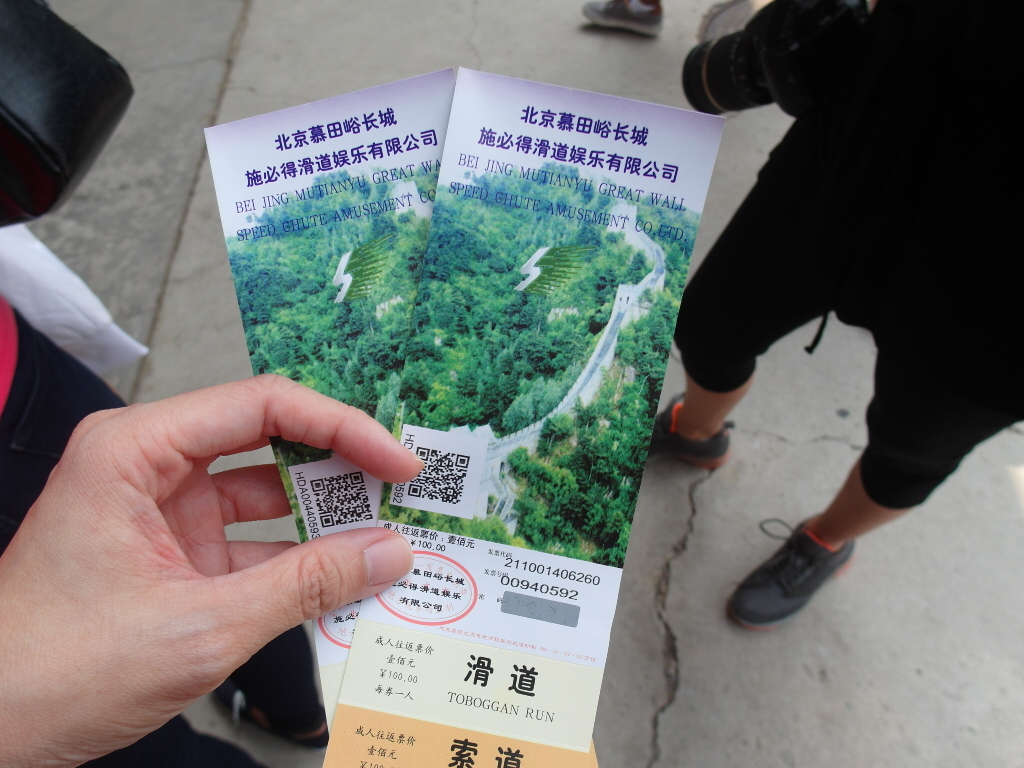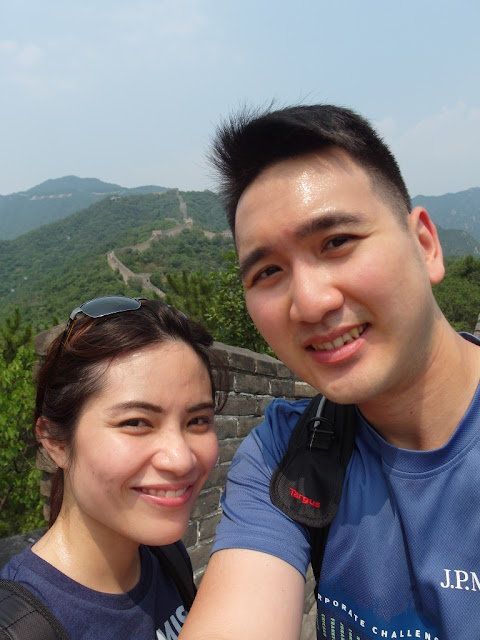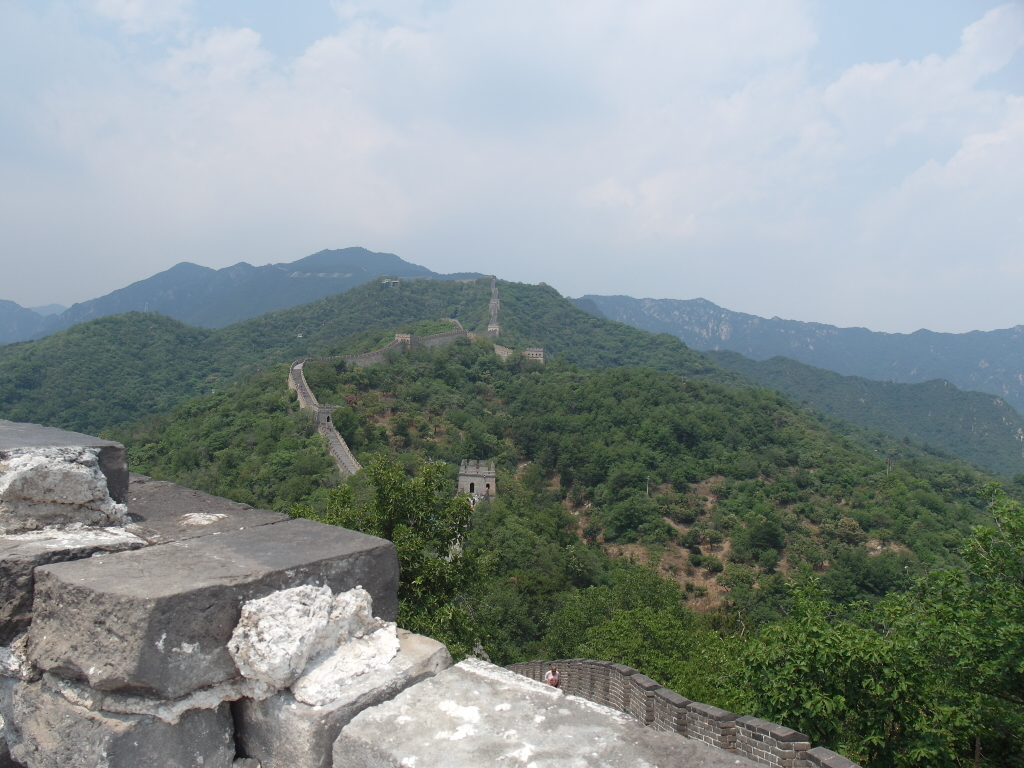Beijing Trip (Jun 2016) - Great Wall of China
Our day 2 was entirely devoted to visiting the Great Wall of China!
The Great Wall of China, one of the wonders of the world, was listed as a World Heritage by UNESCO in 1987. It is around 21,000 km long in its entirety, although it is estimated around 30% of the walls have collapsed due to natural erosion and human damage.
The wall has a long history and was first constructed some 2,300 years ago when China was not yet unified and made up of various warring states. In a bid to defend their own borders, portions of these walls were built. Made up of mainly mud and and gravel, they were meant to withstand smaller weapon such as spear and swords.
When Emperor Qin (the famous Qin Shi Huang) conquered all states, united China and kicked off the Qin dynasty, he ordered the destruction of sections of the walls which divided his empire. However, a new rule was made to build new walls to link portions of these walls along the northern frontier. This was to defend his empire against the Xiongnu people, a confederation of nomadic people up north. Large quantities of resources, including manpower were utilized to build these walls. It was estimated that at least a million men died while constructing during the Qin dynasty alone. Later dynasties (Han, Sui and Northern & Southern) repaired and expanded portions of the wall, seen as an effort to fend off enemies up north. Liao, Jin and Yuan dynasties who ruled Northern China in the 10th to 13th century build most of the wall portions that are located in today's Mongolia and Inner Mongolia. Tang and Song dynasties did not undertake any significant efforts to expand or rebuild.
The idea of reviving and expanding the Great Wall returned during Ming dynasty, which is also the second last dynasty of Ancient China (last being Qing dynasty). The Ming empire failed to gain an upper hand against the Mongolians and decided to develop a new strategy of constructing walls along the northern border. Contrary to wall portions constructed in the earlier dynasties, those built during the Ming dynasty were a lot stronger due to the birth of a new technique - creation of bricks. Most of the portions of the Great Wall we see today were constructed during the Ming dynasty. These Ming walls helped defended the empire against the Manchus in the 1600s before they finally stormed across the walls in 1644, defeating the last of Ming empire and establishing the last dynasty of China - Qing dynasty.
There are 3 locations from Beijing in which one can visit the Great Wall - 居庸关 (Ju Yong Guan or Ju Yong Pass), 八达岭 (Ba Da Ling) and 慕田峪 (Mu Tian Yu). No matter which point you intend to visit, you will definitely need to set aside one full day for it.
If you are staying in central Beijing like most tourists does, Ju Yong Pass is the nearest in Changping county just 50 km away. It is 18 km long and is well preserved. It is also the more commercialized one - so you will have no problem finding international food chains for a meal there I heard!
I went Ba Da Ling a few years back when I was in Beijing for internship. It is the most visited section of the Great Wall and is around 80km away from central Beijing in Yanqing County (still within the Beijing municipal). This section was built during the Ming dynasty and had various high points as it was constructed to protect the Ju Yong Pass and city of Beijing.
Mu Tian Yu is about as far as Ba Da Ling, around 70km away from central Beijing in Huairou County. The full length is around 6km and is densely populated with watch towers. It was first built during the Qi dynasty and strengthened under the Ming dynasty when the regime wanted to protect their northern borders.
There were 2 tours available in the hotel we stayed in and we opted to go with the half day (not really half since the bus takes off at 10am from the hotel) which consist of only Mu Tian Yu section of the Great Wall. If we had opted for the earlier one at 7.30am, the package included Ba Da Ling and the Ming 13 Tombs. I had no interest to go Ba Da Ling again and the boy didn't want to wake up too early so Mu Tian Yu it is! We paid around RMB290 per person, which covers the mini bus ride, a guide and entrance fee.
Setting off!
I went Ba Da Ling a few years back when I was in Beijing for internship. It is the most visited section of the Great Wall and is around 80km away from central Beijing in Yanqing County (still within the Beijing municipal). This section was built during the Ming dynasty and had various high points as it was constructed to protect the Ju Yong Pass and city of Beijing.
Mu Tian Yu is about as far as Ba Da Ling, around 70km away from central Beijing in Huairou County. The full length is around 6km and is densely populated with watch towers. It was first built during the Qi dynasty and strengthened under the Ming dynasty when the regime wanted to protect their northern borders.
There were 2 tours available in the hotel we stayed in and we opted to go with the half day (not really half since the bus takes off at 10am from the hotel) which consist of only Mu Tian Yu section of the Great Wall. If we had opted for the earlier one at 7.30am, the package included Ba Da Ling and the Ming 13 Tombs. I had no interest to go Ba Da Ling again and the boy didn't want to wake up too early so Mu Tian Yu it is! We paid around RMB290 per person, which covers the mini bus ride, a guide and entrance fee.
Setting off!
The weather was gorgeous on the morning we headed there and we were treated to a rare day of blue skies!  The guide kept us entertained with random facts of Beijing throughout our 2 hour ride and before long, we've reached our destination. On a side note, please wear comfortable shoes (read: sports shoes) no matter which part of the Great Wall you are planning to visit. These walls are built along the curves of the hills and mountains and can be fairly steep at certain portions. I saw at least 2 ladies in high heels and I'm not sure what they were thinking.
The guide kept us entertained with random facts of Beijing throughout our 2 hour ride and before long, we've reached our destination. On a side note, please wear comfortable shoes (read: sports shoes) no matter which part of the Great Wall you are planning to visit. These walls are built along the curves of the hills and mountains and can be fairly steep at certain portions. I saw at least 2 ladies in high heels and I'm not sure what they were thinking.
The toilets here were very clean. No nasty surprises in the toilet bowls 
There are 2 ways to get up the Mu Tian Yu Great Wall, either you trek your way up via the steps or you pay extra to take the cable car. Since we only have around 2 hours left, we opted for the latter.
I almost got a heart attack when I saw that THIS was the cable car I'm taking up the mountains. Not kidding but I almost wanted to back out of the queue. Haha. I didn't move an inch on the way up, for fear of shaking/tipping the balance of the car  Still managed to get some shots though!
Still managed to get some shots though!
See that drain-like thing in the photo below? That's included as part of your cable car ticket when you make your way down. IT WAS SO FUN! Will show photos in the later part of the post.
I was terrified so it was the boy who was holding onto the camera to take this selfie. Haha!
The ride was fairly short (albeit traumatizing for me because I'm terrified of heights) and it brings you right at the top of one of the multiple watch towers. The view was AMAZING. I'm going to let the photos do the talking now!
I must say it was a lot less crowded than I expected. Might be because we visited on a weekday but I do hear that Mu Tian Yu has lesser crowds because international visitors tend to opt for Ba Da Ling which is alot more commercialized. I remember going to Ba Da Ling probably around a decade ago and man that crowd was no joke.
It's really funny because the guide kept emphasizing that no matter how far we go (from where we alight from the cable car), please turn back and return to the cable car and take the slide down. She repeated countless times NOT to walk to the end of the Great Wall thinking we could come down from the other side. "That's going to lead you to another county!"  She's so cute.
She's so cute.
The views were insanely gorgeous. I would have opted to stay a longer time if it wasn't for the time limit that the guide set us (so we could be bought to lunch and then back to the hotel by 6pm). So glad to have picked this package over the other one which included Ming 13 Tombs - which I would imagine it to be quite a rushed one.
The queue to take the slide - it was crazily long! It moved fairly quickly though:
This was mega fun! The vehicle (not sure what to call it) we sat on was very easy to control and certainly doesn't go too fast like what it suggested. This ride alone is enough to propel me to recommend Mu Tian Yu over any other portions of the Great Wall to visit! Haha. Well what can I say, even Michelle Obama (picture below) enjoyed it 
The moment we got back to our bus, it started pouring. We were so so lucky!
We got back to our hotel just in time for dinner - we were craving for Lao Beijing Zha Jiang Mian but we couldn't locate the authentic one! So we headed to the mall along Wang Fu Jin and ate steamed dumplings instead.
Look who got the 金牌男朋友 "Best Boyfriend" can of coke?
Summer time has this tendency to make one feels that the day is really long so we headed out for coffee at 7 plus pm. Just because the skies were still so bright!
I shall end my Great Wall post with a shot of the boy trying to solve a word I'm stuck with in the game "Four Pict One Word".
Next up, Forbidden City!
Subscribe to:
Post Comments (Atom)



















































No comments:
Post a Comment